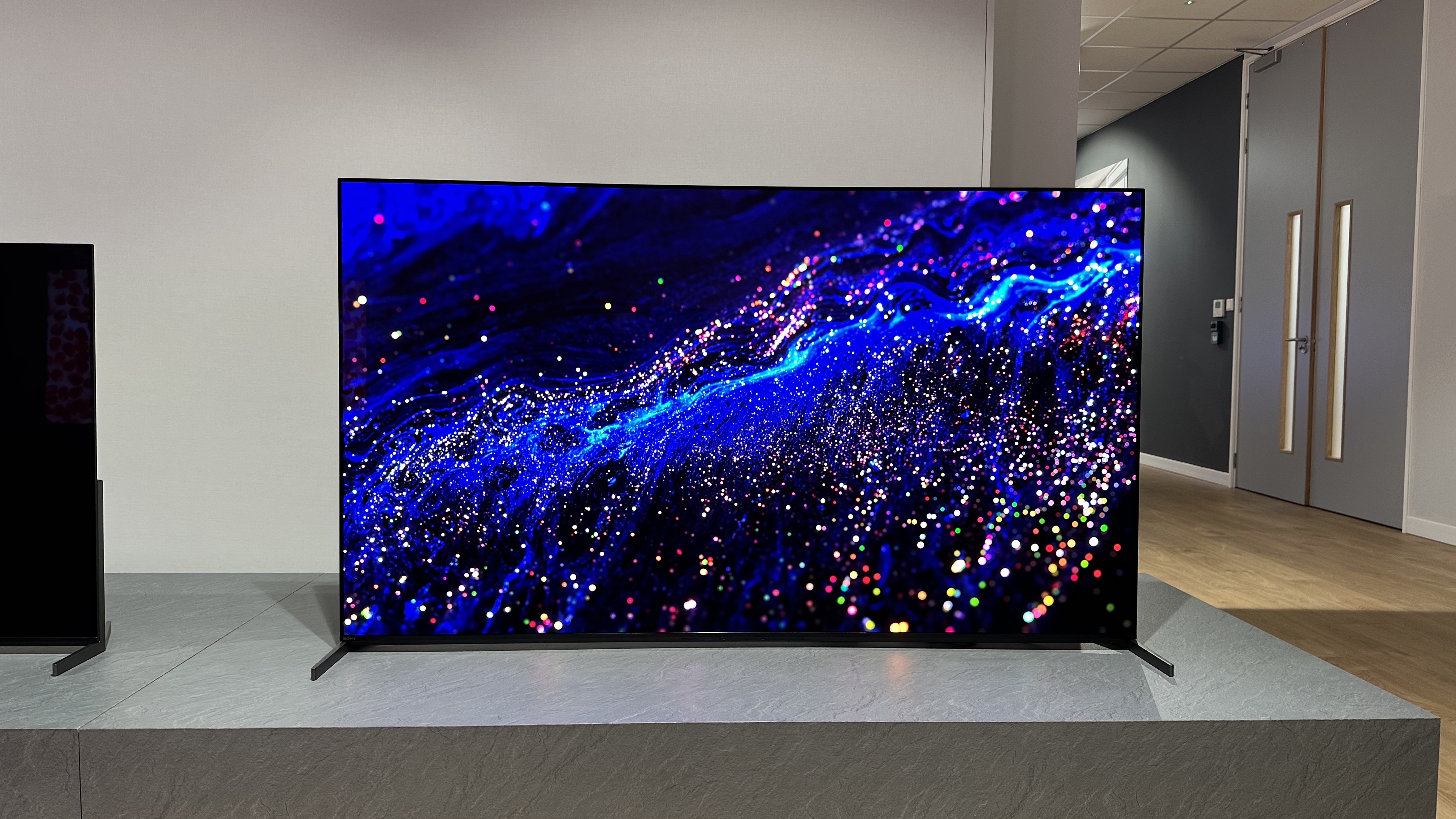
If you take price out of the equation, the Sony A95K was probably the best TV of 2022. One of the two first QD-OLED TVs launched, it trumped its Samsung S95B rival by deploying its brightness-boosting, vibrancy-adding Quantum Dots in a more considered and authentic fashion – and by offering a far superior sound system to boot.
There is, then, considerable interest in its replacement, the A95L. Sony's second-generation QD-OLED TV was revealed in March, and we were able to get a small amount of hands-on time at the launch event.
We were left seriously impressed by the A95L, despite the limitations and brevity of that original demo session, but we've been hankering for more ever since. Unfortunately, Sony isn't quite ready to supply samples for review, but it has provided us with a much more thorough hands-on session – essentially half a day of guided demonstrations and fully independent testing time.
This level of access is a real rarity ahead of the launch of a new TV, and while we still won't deliver our final verdict until we've had it into our test labs for significantly more comparative testing, everything we've seen so far – which is a lot – suggests that the Sony A95L is something really special.
Price and availability
While full pricing for the Sony A95L is yet to be revealed, we do now have official US pricing, and the good news is that it's a little bit cheaper than the A95K was at launch.
At $2800 for the 55-inch model and $3500 for the 65-incher, the A95L is priced $200 and $500 lower than its predecessor was when it first came out. There's no guarantee that the UK and Australia will be similarly blessed, but we're hopeful. Ultimately, we expect the A95L to be priced similarly to the LG G3, which is arguably its most significant rival. It's worth noting, though, that the G3 will have been on sale long enough to have received some discounting before the A95L even reaches shops.
It's also worth mentioning that, unlike the A95K, the A95L will be available as a 77-inch model, should you have the space and the budget – it's been priced at $5000 for the States.
Design
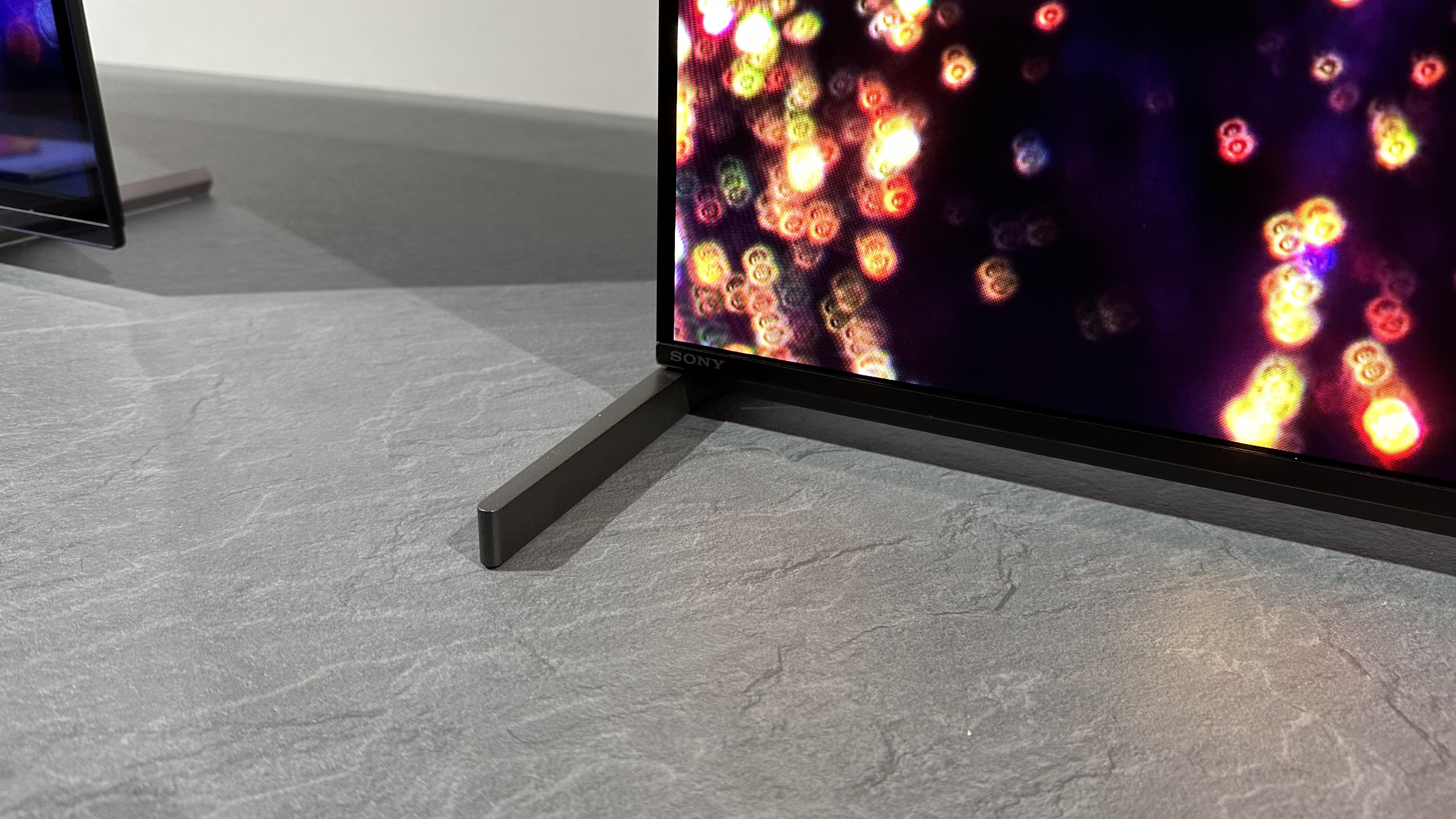
Last year’s A95K is a great-looking TV, mostly because of its innovative stand, which can be placed in front of the TV so that it can sit flush against a wall, or behind it so that you can’t see it at all from the front. The problem with the stand is that it’s extremely heavy, which makes set-up a pain and can’t be good for shipping, either from a cost to Sony or ecological point of view.
It’s perhaps not surprising, then, that Sony has opted for a simpler design consisting of two aluminium feet for the A95L. These feet sit at the extremes of the bottom edge of the TV so as not to create reflections on the screen, but this also gives the set an extremely wide footprint. The 77-inch model includes the option of having the feet installed more centrally so that the TV can have a narrower footprint, and we wish the 55- and 65-inch models did too (Sony says there's simply no room within the chassis of the smaller models for a central stand option). All models do support a 'soundbar stand position' that raises the TV up a few centimetres so that a soundbar can be slotted underneath.
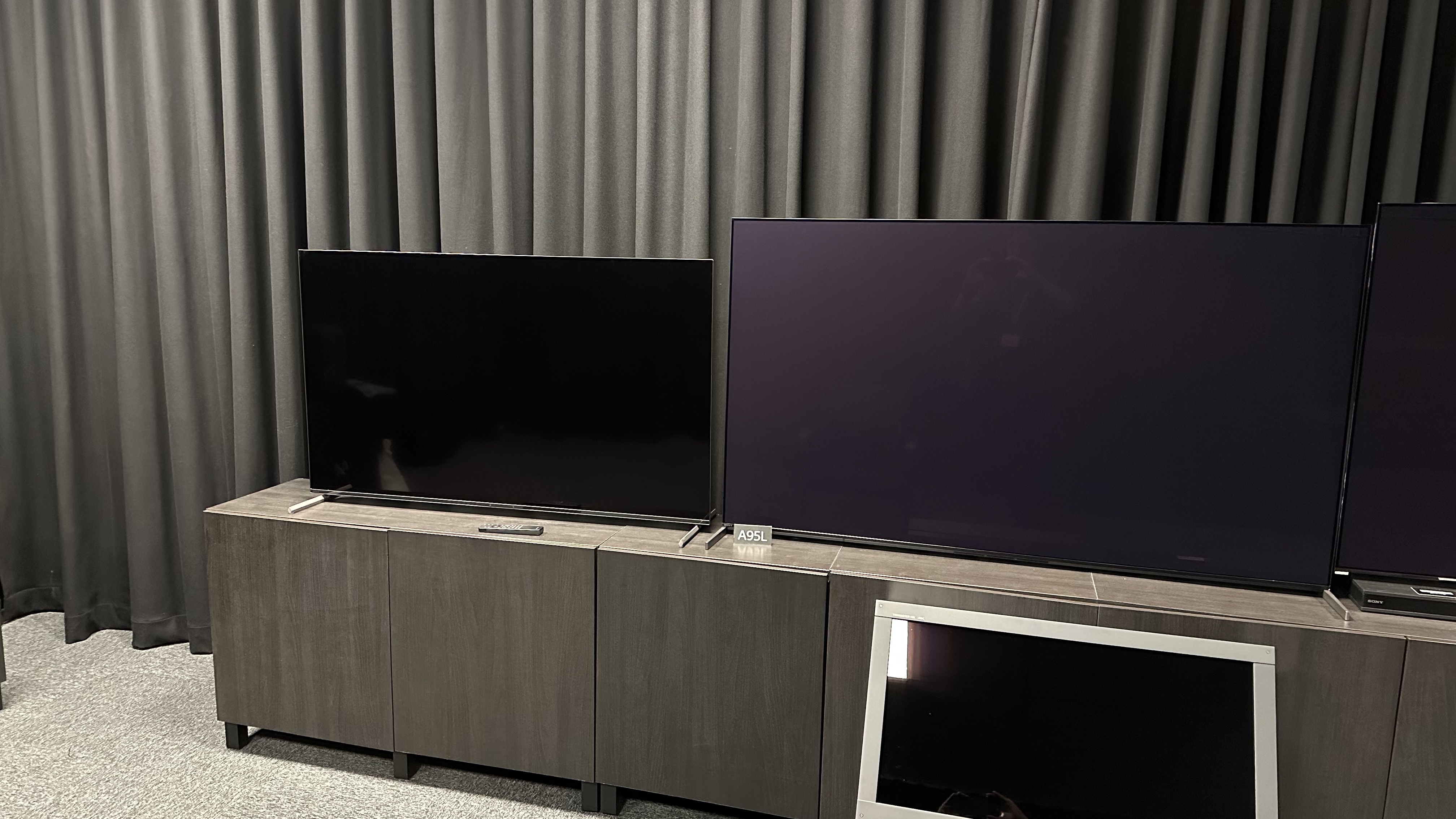
As is the norm for a modern, flagship OLED TV, the pure black bezel is super-thin and flush with the display area of the screen. Interestingly, the panel itself isn't pure black, but more of a dark grey that actually exaggerates the bezel that would ordinarily blend in. We understand this is simply an element of the second-gen QD-OLED panel that the A95L uses, which is less reflective than the one that went before it. Certainly, reflections appear to be impressively well suppressed during our hands-on session, and you only notice the greyness when the TV is off and the room lights are on.
Unlike many OLED TVs but in keeping with Sony’s designs, the A95L isn’t exactly gob-smackingly thin, but its extra thickness is largely down to it housing an advanced heatsink and an unusual, actuator-based sound system as well as all of the usual processing hardware and connections.
Sony also puts more effort than most into making the sides and rears of its sets interesting to look at, and the A95L continues that with its chequerboard pattern. Sony says it’s also increased its use of SORPLAS – a unique material made from primarily recycled plastics.
Features
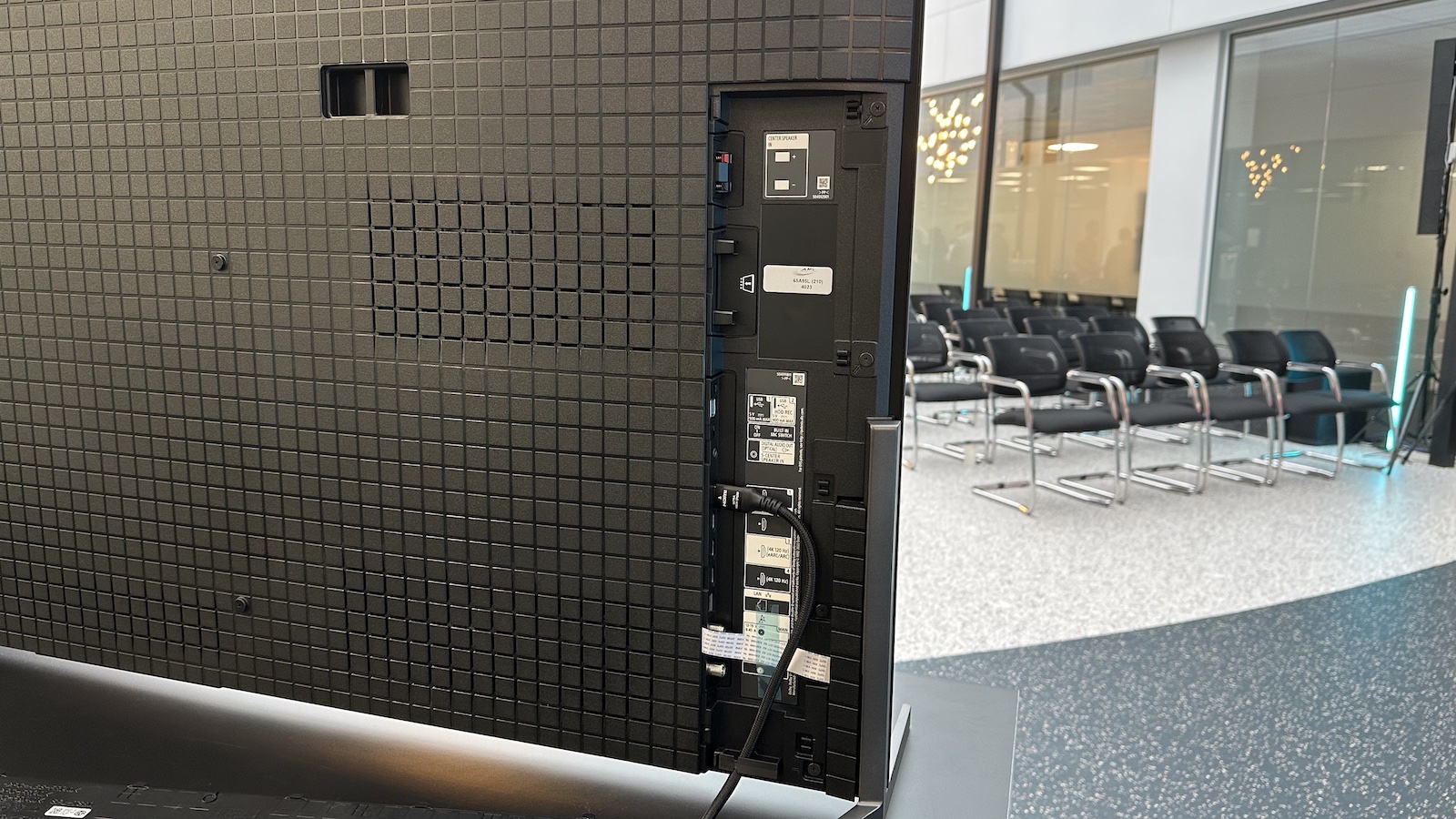
While seemingly impressive, the anti-reflectivity of the A95L's new QD-OLED panel (which is manufactured by Samsung Display and is the same panel that's in the Samsung S95C) certainly isn't its headline feature. That accolade has to go to the extra brightness it unlocks, which Sony confirms makes the A95L capable of going twice as bright as the A95K it replaces.
Of course, performance is about more than the panel itself, and Sony has confirmed that to the QD-OLED panel it’s added its own heat diffusion sheet (also known as a heatsink) and bespoke thermal analysis via the set’s Cognitive Processor XR.
The Cognitive Processor XR is also responsible for Sony’s broader picture processing, which is arguably the best in the business. The key picture processing upgrade this year is XR Clear Image. Sony says this is an adaptive technology that cleans and clears up source material to optimise it for the TV’s 4K resolution.
What’s most interesting about this is that Sony claims the TV understands what the resolution of the source material really is, even if it’s being upscaled by a device (a Blu-ray player, for example) before being sent to the TV. It also, seemingly, can process 4K content, presumably because it apparently looks not only at the resolution of the signal but also things such as the encoding parameters and the bit rate. It can then apply Adaptive Noise Reduction and Adaptive Super Resolution as appropriate, and get rid of noise and/or blur.
There are upgrades on the gaming side, too, but they don’t go as far as some people will have hoped. The good news is that Dolby Vision gaming is finally going to be supported. In fact, the A95L is the only model in Sony’s new TV range that supports it. We understand that’s because it’s the only model that features the new MediaTek Pentonic 1000 HDMI chipset (Sony won’t confirm), but it has to be said that other manufacturers have been offering Dolby Vision gaming at up to 60Hz even on previous MediaTek chips. For what it’s worth, we believe that the A95L’s support of Dolby Vision gaming does stretch right up to 4K/120Hz. Disappointingly, Dolby Vision gaming won't be supported at the A95L's launch but will instead be added at a later date. Frankly, Sony doesn't have a great track record of delivering promised feature updates in a timely fashion, though it must be said that it does tend to at least deliver them eventually.
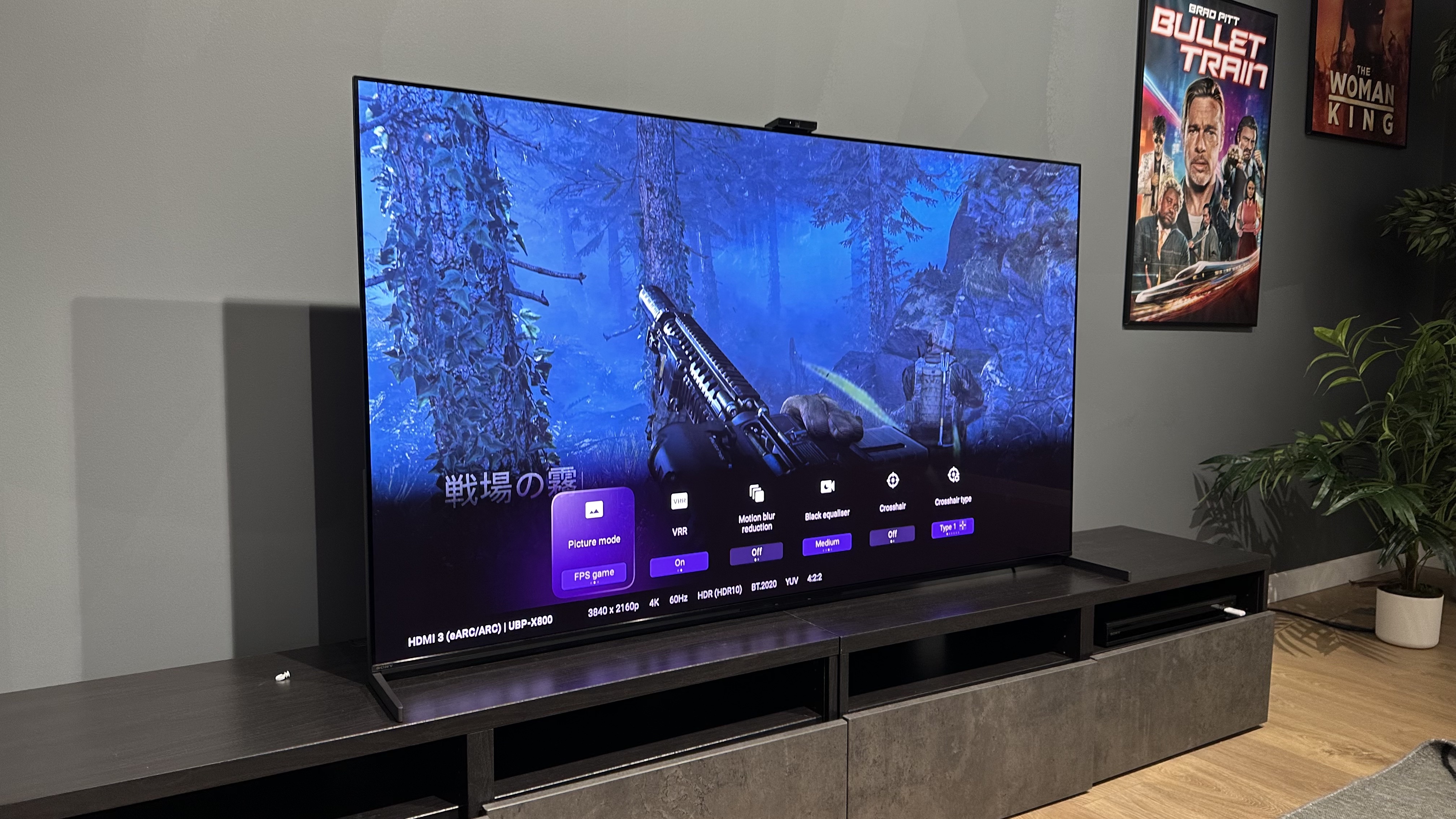
The company has already confirmed that the A95L supports 4K/120Hz gaming in general, as well as VRR and ALLM. And Sony has finally joined its rivals in offering a dedicated game menu that we've already seen on 2023 models such as the A80L, and which gives quick and fairly stylish access to a number of game-specific features such as motion blur reduction and a black equaliser that’s designed to reveal more shadow detail. There’s also an option to add a bold crosshair to the centre of the screen, which sounds even more like cheating than the black equaliser, but each to their own.
One cool feature of Sony’s game menu that I’ve not seen elsewhere is the option to reduce the image size so that your game essentially becomes a smaller window on the screen. Why would you want to do that? Competitive gamers often like to play on relatively small screens that require less eye movement so that action can be responded to more quickly. This feature would allow them to watch movies and TV shows in full screen, but reduce the size of the image for hardcore gaming. The size of the window can be reduced from 100 per cent right down to 30 per cent and anything in between. Again, though, this feature won't be available at launch.
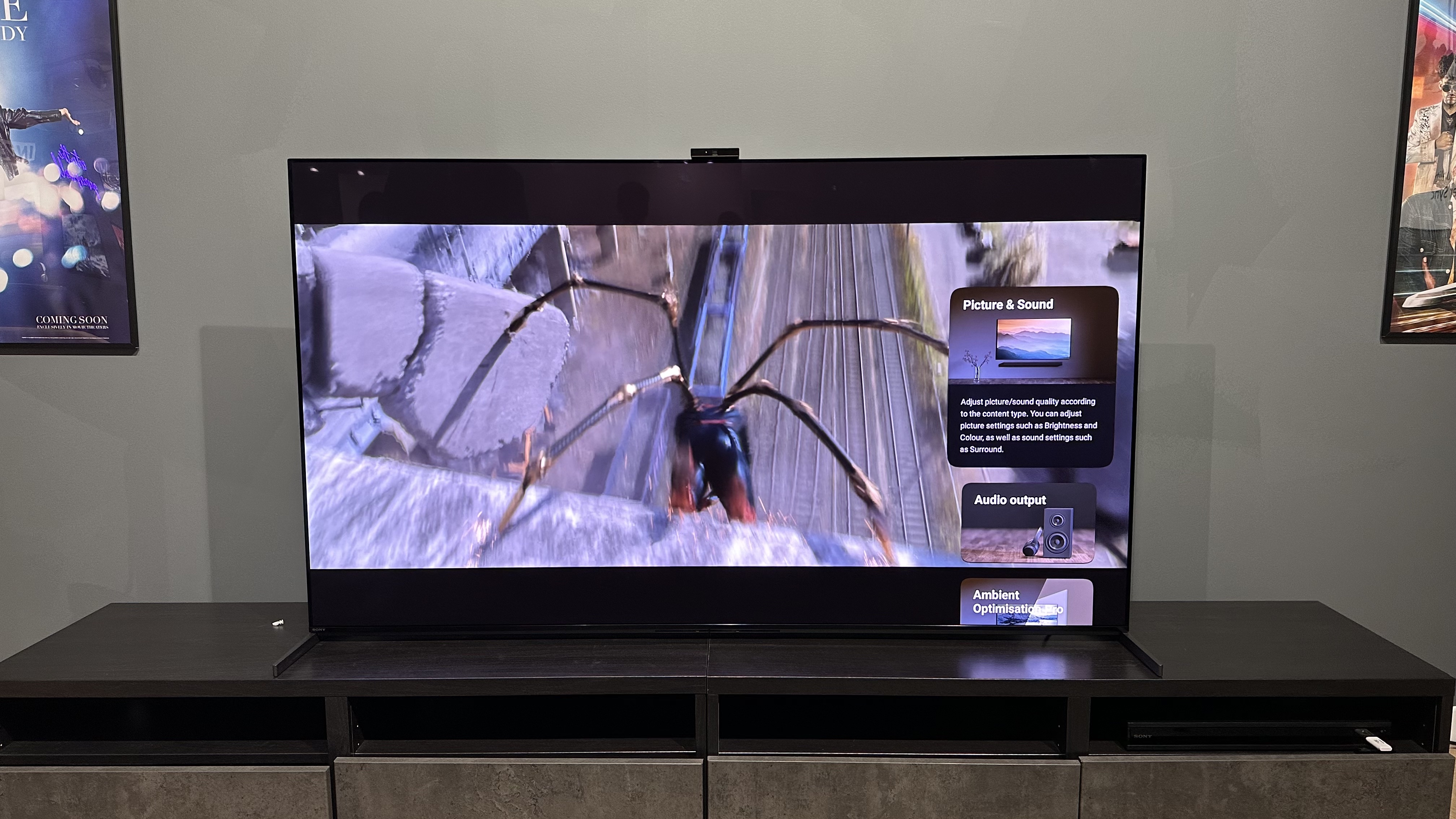
The A95L is also alone in the Sony lineup in getting a feature called Multi View, which allows you to split the screen into two windows so you can, for example, play a game in one while simultaneously following a YouTube tutorial in the other.
The A95L is also the only model in the new range that comes bundled with the Bravia CAM camera (it's an optional accessory for the other TVs in the range). This clips to the TV's top edge and unlocks a host of smart features, including video calling, automatic power saving and picture and sound optimisation based on the specific spot in the room that you're sitting in. We weren't entirely convinced by Bravia CAM last year, but we're intrigued to give it another go when we test the A95L in full.
As with last year’s models, Sony’s 2023 TVs run the Google TV operating system. Interestingly, though, Sony's own menu system, which sits alongside Google TV and handles elements such as picture and sound settings, has had a revamp for the A95L. Essentially, this consists of new, very stylish graphics being added to the various pop-up menus, as well as improved descriptions of each menu and feature. This doesn't sound like much, but it makes the set look and feel much fancier and more modern, and there was no discernible impact on responsiveness during our hands-on session. In fact, the A95L felt very slick and fluid throughout.
Picture
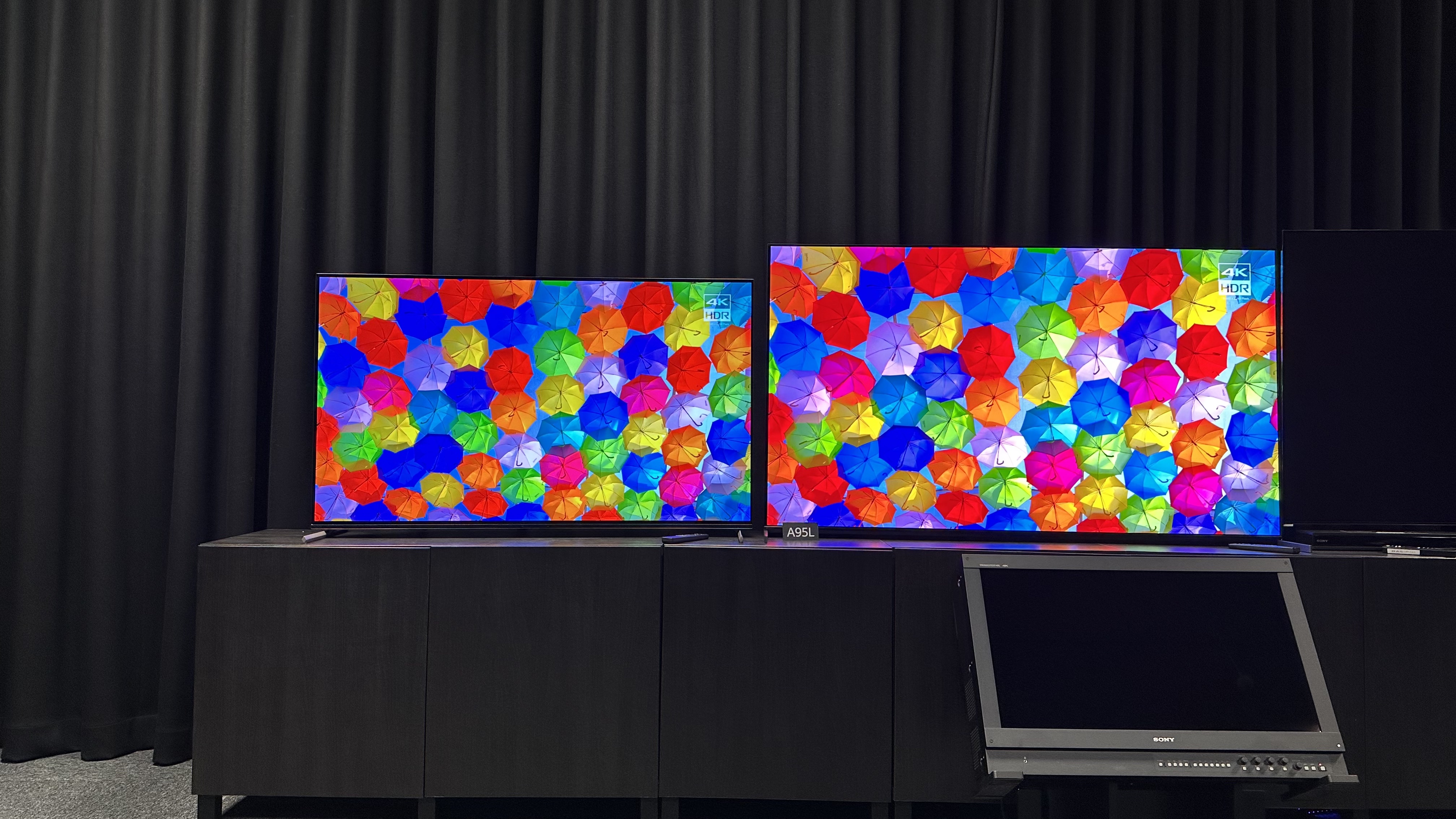
During Sony’s launch event, we had only a brief (as in, a roughly 5-minute) demonstration of an early prototype of the A95L. The prototype nature of the set meant that it could only be run in its Vivid picture mode, which isn’t the sort of mode you’d want to use at home but is useful for demonstrating the performance extremes of the set. Provided for comparison were last year’s Sony A95K and the Samsung S95B, also a 2022 model.
To get straight to the point, the A95L looked awesome, but the limited nature of the demo meant we obviously couldn't draw firm conclusions.
This second hands-on session was a very different proposition – around three hours with an essentially final sample, partly guided by Sony and then fully independent. Sony provided an LG G3, Samsung S95C, its own A95K and A80L, and a mighty BVM-HX310 mastering monitor as reference.
This level of access to an unreleased TV is almost unheard of, and it's testament to Sony's confidence in its new flagship OLED. That confidence seems to be well placed – the A95L came through this hands-on session smelling entirely of roses, comfortably beating the provided competition and getting as close to the mastering monitor as we have ever seen.
Initially, Sony once again demonstrated the A95L in its Vivid mode – not because it expects or even wants owners to use it in that way, but because it essentially turns everything up to the maximum, revealing the set’s upper limits. As was the case in March, the TV looked very good here, proving brighter and more vibrant than the provided rivals while also being less lurid in its delivery. This still isn't a mode that you should use at home – too cool blue and vivid for that – but it does highlight that the A95L can dazzle when required.
More useful, though, was the part of Sony's demo that involved a switch to the Professional preset, which is essentially the company's Custom mode renamed, and the TV at its most accurate. The LG G3 and Samsung S95C were switched to Filmmaker Mode – also their most accurate presets – and the HX310 mastering monitor was switched on.
There was a lot to take in here, but the key takeaway was that the A95L comfortably provided the picture that was most similar to that of the mastering monitor. There are of course differences, most notably in the brightness of large, bright picture elements, which the monitor can still produce with more punch (for the uninitiated, the HX310 monitor uses dual LCD layers to produce up to 1000 nits brightness across the whole display when required, while even the brightest OLED, which the A95L may well be, can only hit its peak brightness of around 2000 nits in small areas at one time), but in terms of colour tone, punch and vibrancy, it’s amazingly close. Ditto for contrast. In short, watching the A95L feels like watching what the director intended to a greater degree than the rivals here.
Once left to our own devices, we decided to try a number of our own test discs on the A95L at the same time as the G3 and S95C. Starting with The Batman, this comparison proved fascinating. There’s more to it than this, of course, but broadly speaking, the G3 looks a little pale and its dark scenes perhaps too bright – there’s lots of insight but less impact and solidity due to a comparative lack of black depth.
The S95C goes the other way. Its blacks, while generally very good, are a little too intense with a small amount of lost shadow detail. Faces in dark scenes are less well illuminated, too, so some of the subtleties of expressions in the crime scene at the start of The Batman are missed. It also misses the wrinkles in Bruce Wayne’s biker jacket, which it reproduces as pure black.
By comparison, the A95L simply seems expertly balanced and poised. There’s intensity to its colours and bright highlights, but not in a way that feels forced – as it can at times from the the Samsung – and it balances black depth and shadow detail brilliantly. The Sony appears to produce very accurate skin tones, too, and supremely nuanced shading.
A quick switch to the test-favourite Guardians Of The Galaxy Vol. 2 4K Blu-ray proves very worthwhile. The A95L reproduces the clouds in the opening shot with beautiful three-dimensionality, giving the overall image an amazing sense of depth, yet you never feel as if the picture is exaggerated or over-etched.
It's still richer than the G3 here, but without the slightly artificial vividness of which the Samsung is occasionally guilty.
Before running out of time, we pop the 1080p True Grit Blu-ray into the player in order to get more of a sense of the XR Clear Image feature. It's fair to say that the A95L takes a less bright and impactful approach to the LG G3 (it may be possible to change this in the settings but we were running out of time), but it's also much cleaner and less noisy, and is generally balanced and subtle in a way that's very pleasing.
Sound
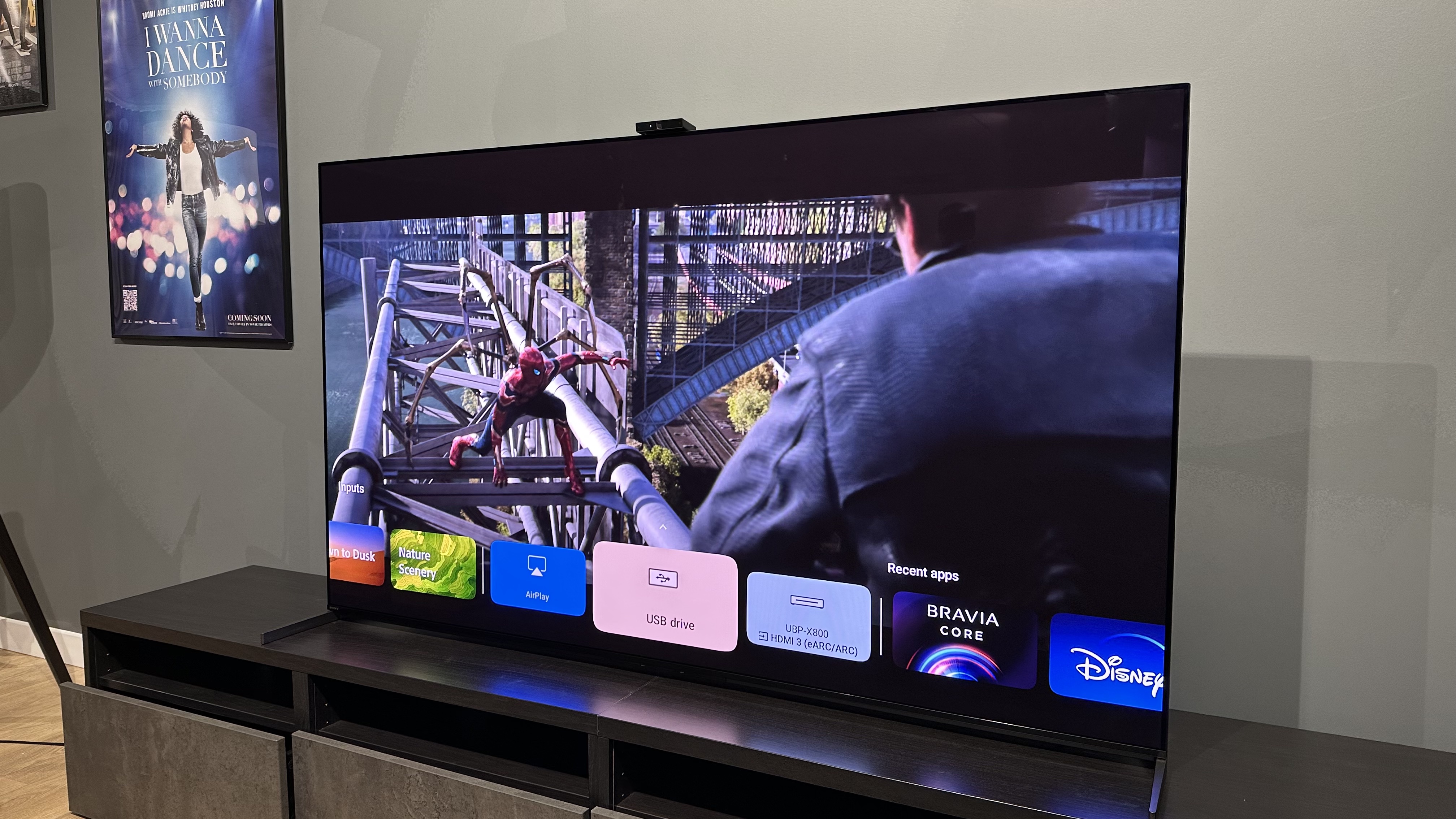
The A95L uses a very slightly tweaked version of the 2.2-channel actuator-based sound system of the A95K. Two actuators vibrate the whole screen in order to make sound, backed up by two regular woofers that add bass. The goal of the actuator-based system is to ensure that the sound and picture are spatially connected, and it’s an approach that’s worked well for Sony for years now.
The sound section of the new demo session wasn't terribly long, but it didn't need to be in order to suggest that the A95L sounds much better than its LG and Samsung rivals. That isn't saying much, though – the G3 and S95C both scored just three stars for sound in our reviews, with the G3 being criticised primarily for sounding dull, and the S95C for lacking weight and forward projection.
The A95L is essentially in another league. It goes much louder, offers much better dynamics and detail, and combines that sound-from-screen precision with lots of spaciousness. We think it possibly has more bass weight and depth than previous Sony OLEDs, too, though we ran out of time for a Sony-on-Sony sound comparison, so that will have to wait until we get the TV in for a full review.
Early verdict
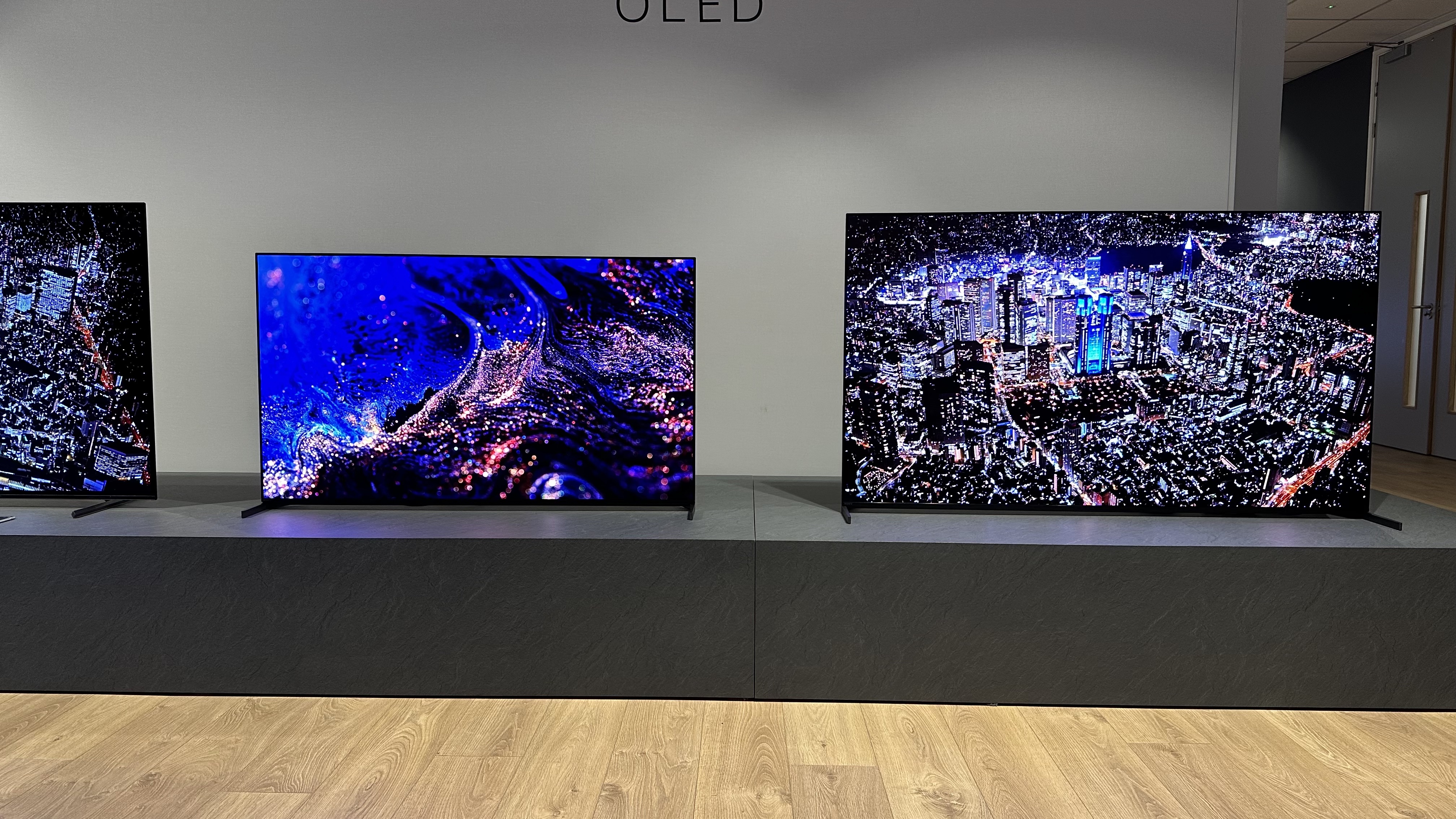
While this hands-on session was much more open and in-depth than most, it's still nothing like as long as we need with a TV before we deliver a final verdict. It was, though, enough for us to get a good idea of the A95L's capabilities – and they seem vast.
Not only is this a TV that's capable of going astonishingly bright and producing incredibly vibrant colours, in the right picture modes it appears to use those abilities to recreate movies and TV shows more accurately than the TVs with which it is competing.
To reiterate, we will still reserve judgement until the TV has been into our test labs for comprehensive, comparative testing over a number of days, but at this stage, the A95L looks exceptional.
MORE:
The TVs to beat: check out our LG G3 review and Samsung S95C review
And here's our review of the step-down Sony A80L OLED
Don't want to wait? These are the best TVs you can buy right now







